-
Software
-
CAM software
- Tebis Automill
- CNC programming
- CNC automation
- CNC simulator
- Multiple setup
- Robotic machining
- CNC drilling
- Deep-hole drilling
- Combined turn-milling
- CNC turning
- Turn-milling
- 2.5D milling
- 3D milling
- 5-axis milling
- Slot milling
- Trimming
- HPC milling
- HFC milling
- Circle-segment cutters
- Sinker EDM
- Wire EDM
- 3D laser cutting
- Laser hardening
- Laser weld cladding
- CAD software
- CAQ software
- MES software
- Products
-
CAM software
- Services
- Consulting
- Sectors
- References
- Company
- News

-
 Home References
Home ReferencesContinuity and advancement as the recipe for success
M.Reuss GmbH with headquarters in Schwarzach am Main is in its third generation of model, mold and die manufacturing with a broad product spectrum. The company supports its customers from the concept to the product being ready for series production, and juggles the conflicting demands of increasingly stringent requirements on the one hand and increasing deadline pressure on the other. M.Reuss successfully meets this challenge with its more than 65 years of experience and by continuously adjusting its internal processes.
Company
M.Reuss GmbH
Location
Schwarzach am Main, Germany
Focus
Increased productivity through process automation
Benefits:
- Automation and standardization
- Consulting investment costs paid for themselves within the same year
- Machine downtimes reduced, throughput times shortened
Sector
Mold manufacturing
Die manufacturing
Model making
Automotive
Published
2016

Interviewee: Matthias Reuss, Markus Reuss, Managing directors

Thanks to process and investment advice, we were able to increase our productivity by 15% per year. Even during the 2009-2010 crisis we could invest in new machines and technology to continuously improve our financial position despite the collapsed market at the time.
Matthias Reuss, Managing Director, M.Reuss GmbH, GermanyM.Reuss represents a confluence of the traditional and the modern, as is readily evident in a tour through the two buildings with their 2800 m². The joiner's workbench converted to a lathe decades ago by company founder Max Reuss can still be seen along with other inventions of the founder. Today, ultramodern components are manufactured to the highest precision by seven 5-axis machining centers, such as two DMC 105 V linear gantry milling centers or the DMF 260-11 linear traveling column machining center. Models, molds and tools are designed on 4 CATIA workstations and 15 Tebis workstations. The use of Tebis is now almost a tradition at M.Reuss. The company has been using the CAD/CAM system since 1990 and is thus one of the earlier Tebis users – initially, Tebis ran on another historical object, a 286 PC. Currently, nearly 90% of M.Reuss' production is for the automotive industry − primarily interior dies of aluminum with pneumatic or hydraulic actuation, from the prototype to series production, cubing elements or gauges.
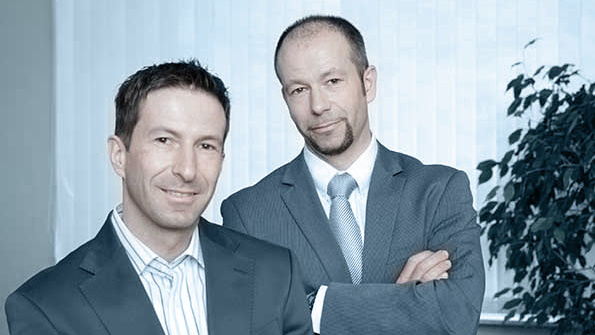 Managing Directors of M.Reuss since 2000: From left: brothers Matthias (master mold maker) and Markus Reuss (mechanical engineer (University of Applied Sciences)).
Managing Directors of M.Reuss since 2000: From left: brothers Matthias (master mold maker) and Markus Reuss (mechanical engineer (University of Applied Sciences)).First process and investment consulting
M.Reuss acquired its first Huron KX 100 5-axis gantry milling center in 2006. Shortly after investing in additional 5-axis centers, it proved that because the machines manufactured at such a high rate, internal processes were unable to keep up with these machines – they were too slow. Corporate management reached out for help to fully exploit the capacity of a DMC 105 linear: The first process and investment consulting project was started with the advisors from Tebis Consulting in 2008. The objective at that time was to modify the processes in such a way as to justify the investment in the machine.
The analysis of the current situation yielded a detailed list of weaknesses, especially in the flow of information, in work procedures, in detailed project and machine planning and in tool management. Today, Markus Reuss lists the following aspects as the most important results from the consultation: Paperless manufacturing with prepared templates and especially automation and standardization in design and in calculation of the processes, as well as the resulting more effective manufacturing. It should also be mentioned that the machine operators at M.Reuss perform NC programming directly at the machine.
In-shop programming in Tebis is common at M.Reuss. Managing director Markus Reuss sees benefits in the performance of demanding work directly at the CNC machine and in an interesting and varied workplace for personnel. There is also direct feedback of the experiences and knowledge of the machine operators in the programming.
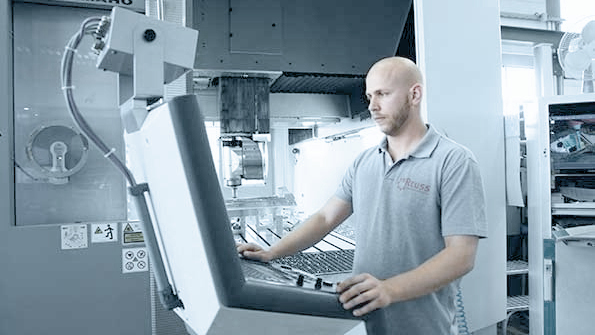
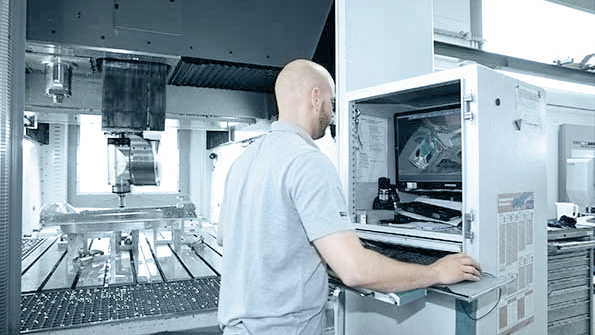
Structures and procedures must be clear to enable this model to function and to prevent machine downtimes and more frequent questions. Great emphasis was therefore placed on optimal interaction between design and NC programming. The Tebis consultants recommended that M.Reuss make more comprehensive use of the Tebis technology, specifically targeting implementation to accelerate the processes in order to optimize collaboration in these areas.
Tebis technology increases productivity
Work with uniform coloring and with features was introduced in design. Tebis implementers set up so-called NCSets for M.Reuss, which can be used to permanently assign or variably describe the exact technical machining sequence for a specific type of machining based on the associated individual functions with all manufacturing parameters and the corresponding required tools.
In addition, templates (NCJobs) were set up in which the machining operations were defined for classes of components with similar structures and tools. This preparatory work enabled the automation and standardization of NC preparation and NC programming.
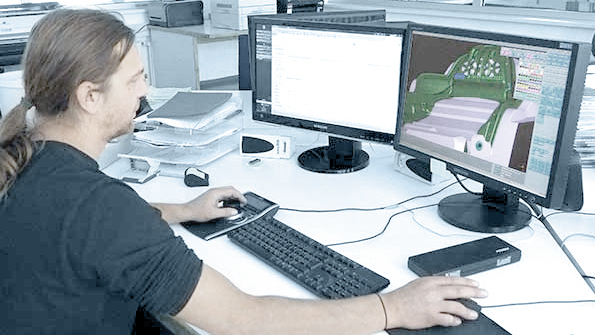 Project manager Achim Brückner designing a molding tool for a car seat at the Tebis design workstation. Tebis is used in a floating environment at M.Reuss.
Project manager Achim Brückner designing a molding tool for a car seat at the Tebis design workstation. Tebis is used in a floating environment at M.Reuss.2.5D drilling tools and manual change tools were also included in the Tebis tool library along with all of the standard machine tools.
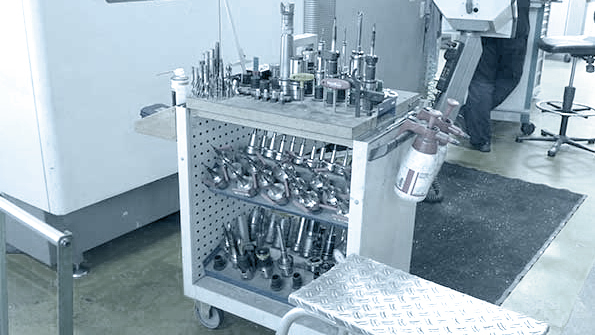
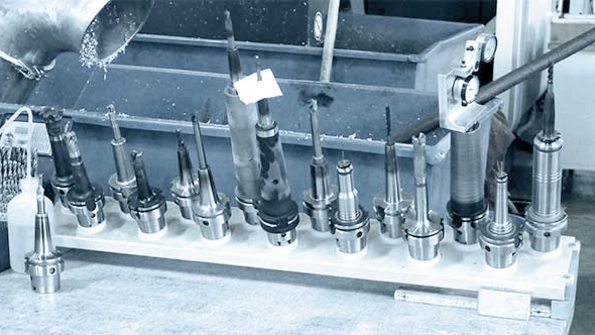
Tebis personnel also imported all the tools into the Tebis tool library. The results from all of these efforts: Increased efficiency, reduced machine downtimes, shorter throughput times. The investment in Tebis consulting and services paid for itself in the same year, thus exceeding all expectations.
Tebis services as a pattern
An extra benefit: M.Reuss was able to use the process optimization system set up by Tebis personnel as a type of pattern which it then applied five times to an additional 5-axis milling centers procured over the next five years. Without external help from Tebis, personnel were able to work with feature detection, set up NCSets and templates and add additional tools to the tool library, which now holds several thousand tool combinations. Thanks to the guidance from Tebis, we were able to increase our productivity by 15% per year. Even during the 2009-2010 crisis we could invest in new machines and technology to continuously improve our financial position despite the collapsed market at the time," Markus Reuss summarizes.
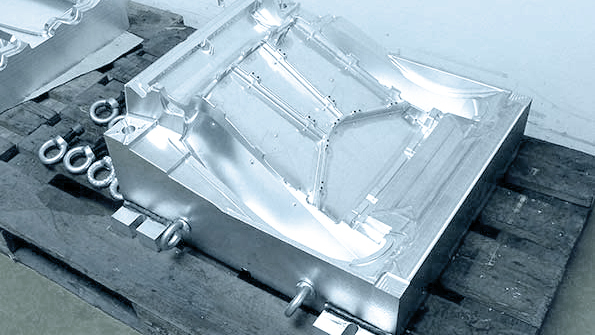
Typical components at M.Reuss: Aluminum foam die for car seats, cubing side panels and check gauges for window frame gauges, manufactured for automotive suppliers.
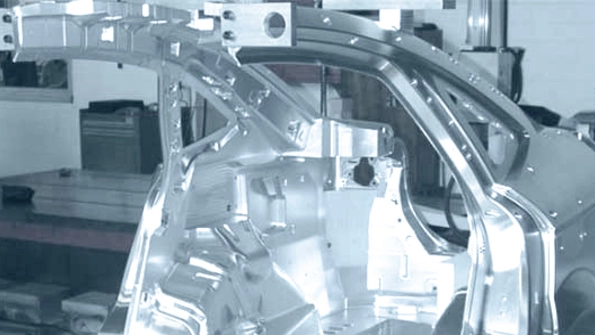
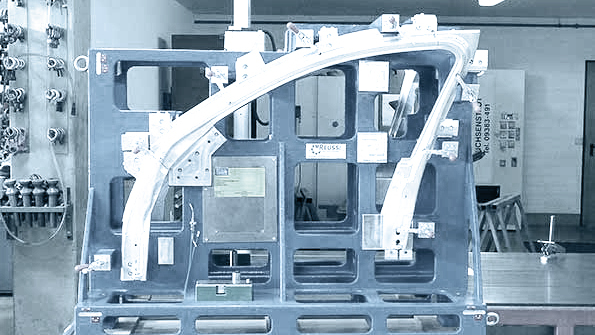
A treat for personnel
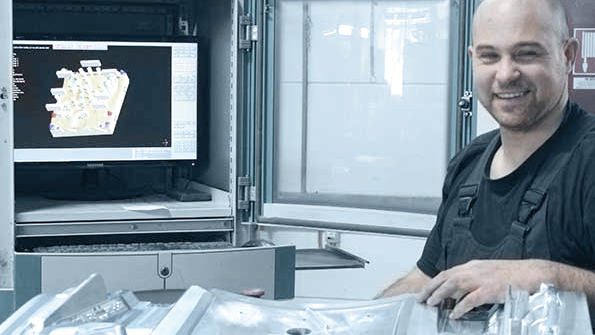 Two Tebis Viewer stations in accounting have significantly improved the flow of information between design and manufacturing and accounting. This shows that the consistency of prepared processes has reached throughout the company.
Two Tebis Viewer stations in accounting have significantly improved the flow of information between design and manufacturing and accounting. This shows that the consistency of prepared processes has reached throughout the company.The goals set at the start of the project were achieved and the defined measures were implemented. What's more, "they serve as the foundation for the work that is still continuing today," says Markus Reuss. Yet there were initial hurdles to overcome at M.Reuss. Initially, corporate management was confronted not only with the investment for Tebis AG's consulting and services, but they also feared that the project would drain much of the capacity from daily operations. The affected personnel initially had a negative opinion of the changes – a completely normal response, as Jens Lüdtke, Head of Tebis Consulting, well knows: "We are confronted with concerns from personnel regarding impending changes in nearly all of our projects. We therefore consider the inclusion of everyone affected to be one of our most important tasks." But M.Reuss personnel were soon impressed by the previously unheard-of speed with which components can be designed and programmed in Tebis when the full potential of the software is exploited. And there was a "treat" for the employees, as Markus Reuss puts it, at the conclusion of the project: NC programmers and machine operators receive a reward for every hour their machines run unattended outside of work hours. No question: The processes have more than caught up with the machines.
New consulting project for new challenges
A second consulting project has been underway at M.Reuss since October 2015. "It's about accelerating processes again," explains Markus Reuss. To reduce setup times, M.Reuss wants to work with pallet changers and multiple setup in the future. First, a 5-axis machining center with five tables and 260 tools is to be implemented in the company's single part production in conjunction with the zero-point setup system to be prepared by then. "The investment must pay for itself," explains Markus Reuss. As before, he is again relying on Tebis Consulting. This reflects the company's underlying principle: Combining continuity and advancement.
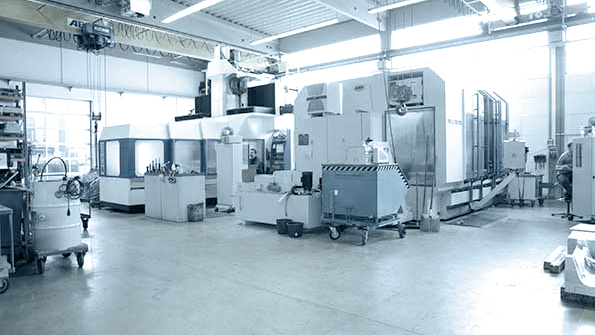 The machine building
The machine building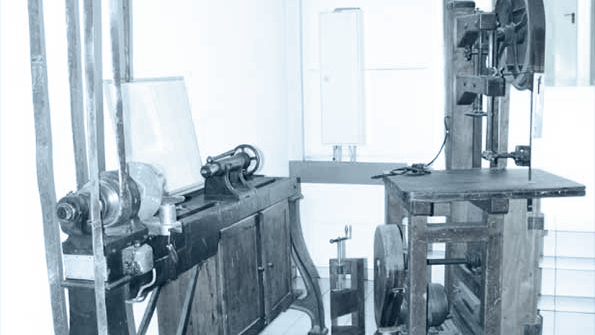 Manfred Reuss, the father of current managing directors Markus und Matthias Reuss, repurposed these joiner's benches as a lathe (left) and bandsaw (right).Tebis – simple and intuitive
Manfred Reuss, the father of current managing directors Markus und Matthias Reuss, repurposed these joiner's benches as a lathe (left) and bandsaw (right).Tebis – simple and intuitive
Matthias Reuss is a master mold maker and is expanding this discipline in his operation with two additional master mold makers. He describes the activities of a mold maker as extremely varied and interesting. Designers or CNC millwrights receive several practice tasks in a one-week placement exercise before being employed at M.Reuss. One of the tasks is to implement the sketch of a trailer hitch as a 3D model in Tebis and to design the necessary free-form surfaces. "This task provides a good estimate within a week of the applicant's spatial perception, implementation of problems, learning ability and development potential. This provides certainty on both sides," says Markus Reuss. And the response to Tebis: "The prospective trainees/specialists praise Tebis as being very simple and intuitive to operate," stresses Markus Reuss. He personally appreciates the continuity and comprehensive functionality of Tebis.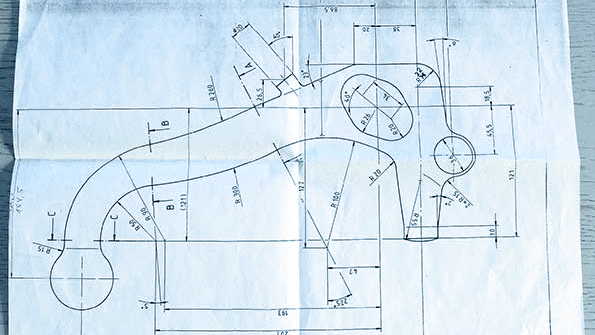 This sketch of a trailer hitch, a journeyman's piece, is a part of the placement exercise. Prospective CAD/CAM specialists at M.Reuss have to implement this as a 3D model in Tebis.
This sketch of a trailer hitch, a journeyman's piece, is a part of the placement exercise. Prospective CAD/CAM specialists at M.Reuss have to implement this as a 3D model in Tebis.

